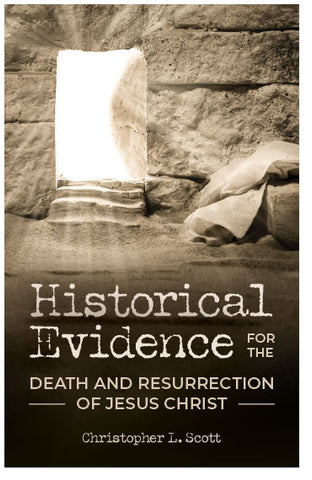Historical Evidence for the Apostle Paul
Special-Order Folded Tract
 NOTE: This item is custom-printed to order (click for more details).
NOTE: This item is custom-printed to order (click for more details).
This tract is from our print-on-demand library, and is not kept in stock. Select the options below, and we will custom-print a batch just for you. Because this item is custom-printed, you can add your custom imprint to the back page at no extra cost.
- Estimated shipping date: Thursday, January 1 (Click for more details)
- SKU:
- Discounts: Discount coupons do not apply to this item
- Format: Folded Tract
- Size: 3.5 inches x 5.5 inches
- Pages: 4
- Imprinting: Available with 5 lines of custom text
- Returns: Because this item is custom-printed to order, it cannot be returned.
Show all item details
The full text of this tract is shown below. (Do you want to print this tract in a different version than the one listed? Contact us and let us know what you're looking for—we may be able to create the alternate version for you at no charge.)
Paul of Tarsus was one of the most zealous persecutors of the Christians shortly after the death and resurrection of Jesus Christ (Philippians 3:5-6). When some people were furious at a Christian man, Paul held the coats of those people while they stoned the man to death (Acts 7:58, 8:1). Yet Jesus Christ appeared to Paul (Acts 9:4-6) and told Paul that he would be God’s chosen instrument to share the Good News about Jesus with the Gentiles all over the world (Acts 9:15-16). Paul began traveling, preaching, and teaching about Jesus Christ.
There are twenty-seven books in the
New Testament, and thirteen of those were written by Paul. But, was he a real man? Did he really live or were these letters just created as “fictional” religious propaganda? A quick survey yields some interesting finds about the apostle Paul.
There are at least nine direct mentions of the apostle Paul in various categories of literature from the first to fourth centuries. Here is a brief look.
The first category comes from what are known as the Apostolic Fathers. Clement of Rome (AD 35-95) mentioned Paul in his writings saying that Paul was killed upside down by the Emperor of Rome, Nero. Ignatius (AD 35-107) wrote a letter to the city of Ephesus that mentioned the ministry of Paul. Polycarp (AD 69-156) wrote a letter to the city of Philippi and said that Paul was a good model to follow.
The second category is historians. Eusebius (AD 263-339) mentioned Paul forty-eight times in his various writings recording history in the first century. (For me, Eusebius is perhaps the most credible because his historical writings are also quoted by Socrates, Sozomen, Theodoret, Athanasius, and Jerome.)
The third category is Marcionites and Ebionites. The man Marcion (AD 85-160) loved Paul so much he worked hard to make a collection of all of his letters. The Ebionites (AD 140), who did not like Paul’s theology, nonetheless acknowledged his existence.
The fourth category is extra writings. The Acts of Paul and Thecla (AD 190) is a book that describes the physical characteristics of Paul. The Epistle to Rheginos (fourth century) says that Paul was a man who died and went to heaven. The Acts of Peter (second century AD) says that Paul took a journey from a Roman harbor of Ostaia to Spain.
That’s a list of what contemporaries to the apostle Paul said about him during his lifetime and shortly after his death. Paul of Tarsus was a real man who traveled more than 13,000 miles all around the Roman Empire talking about his Savior Jesus Christ. If what the Bible says about Paul is true it leads me to believe that other things the Bible describes are true too.
Christopher L. Scott











